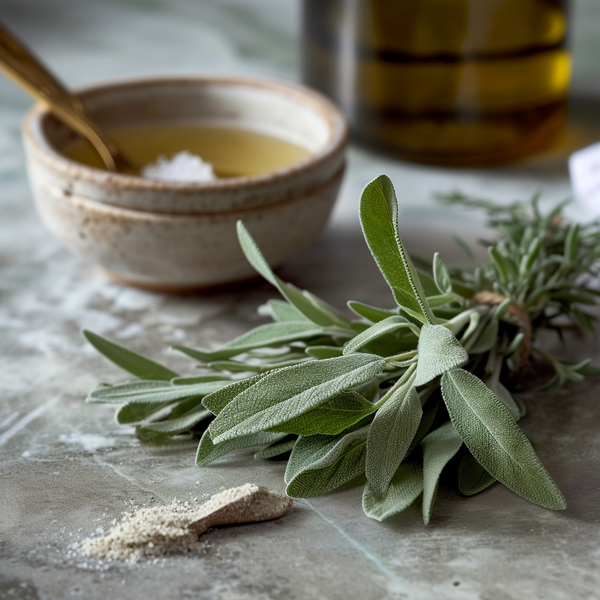
Sage
Sage is a fragrant herb known for its soft, silver-green leaves and a savory, slightly peppery flavor. It's a staple in Mediterranean cuisine and is used both fresh and dried in various culinary applications. Sage has a strong flavor, so it's typically used sparingly. Here's how sage is commonly used in cooking:
Roasts and Stuffing:
Sage is often used to season poultry, pork, and lamb roasts, contributing to a deep, aromatic flavor. It's also a classic ingredient in stuffing and dressing recipes, especially for Thanksgiving turkey.
Butter Sauces:
Sage leaves are frequently cooked in butter until crispy and used to make sage brown butter sauce, a simple yet flavorful sauce that pairs well with pasta, gnocchi, and roasted vegetables.
Sausages and Meats:
Ground sage is a common seasoning in sausages and meat mixtures, adding a warm, earthy flavor. It's also used in meatloaf and meatball recipes.
Soups and Stews:
Fresh or dried sage can be added to soups and stews, where it imparts a subtle, savory undertone. It's especially good in bean soups, lentil stews, and creamy squash soups.
Sage Tea:
Sage leaves can be steeped in hot water to make an herbal tea, which is believed to have various health benefits.
Pasta Dishes:
Chopped fresh sage is used in pasta fillings, such as ravioli stuffed with ricotta and sage. It's also used as a seasoning in pasta sauces.
Vegetable Preparations:
Sage complements the flavors of many vegetables, including squash, potatoes, beans, and peas. It can be added to roasted, sautéed, or grilled vegetable dishes.
Egg Dishes:
Fresh sage can be used to flavor omelets, frittatas, and quiches, adding a unique taste that pairs well with cheese and vegetables.
Breads and Biscuits:
Chopped sage can be incorporated into bread doughs, biscuits, and scones, lending a savory note to baked goods.
Infused Oils and Vinegars:
Sage leaves can be steeped in oils and vinegars to create infused condiments that carry the herb's distinctive flavor, ideal for dressings, marinades, and cooking.
When using sage in cooking, it's important to consider its potency—fresh sage tends to be less intense than dried, and the leaves should be added at the right time in the cooking process to best impart their flavor. Dried sage should be used in even smaller quantities due to its concentrated flavor. Sage's robust taste makes it an excellent herb for pairing with rich and fatty foods, as it adds a balancing note of savory complexity.
Nutritional Information
calories
315
carbohydrates
60.73 g
fats
12.75 g
protein
10.63 g